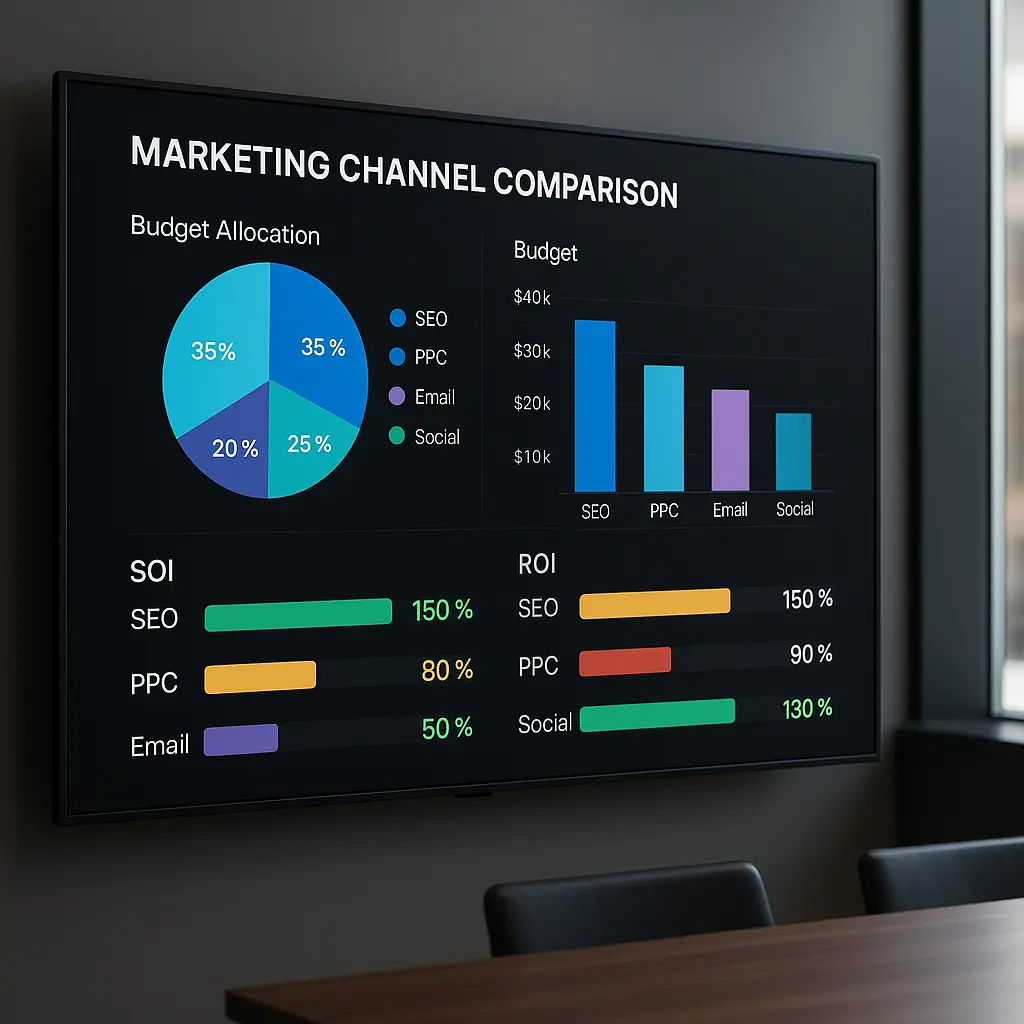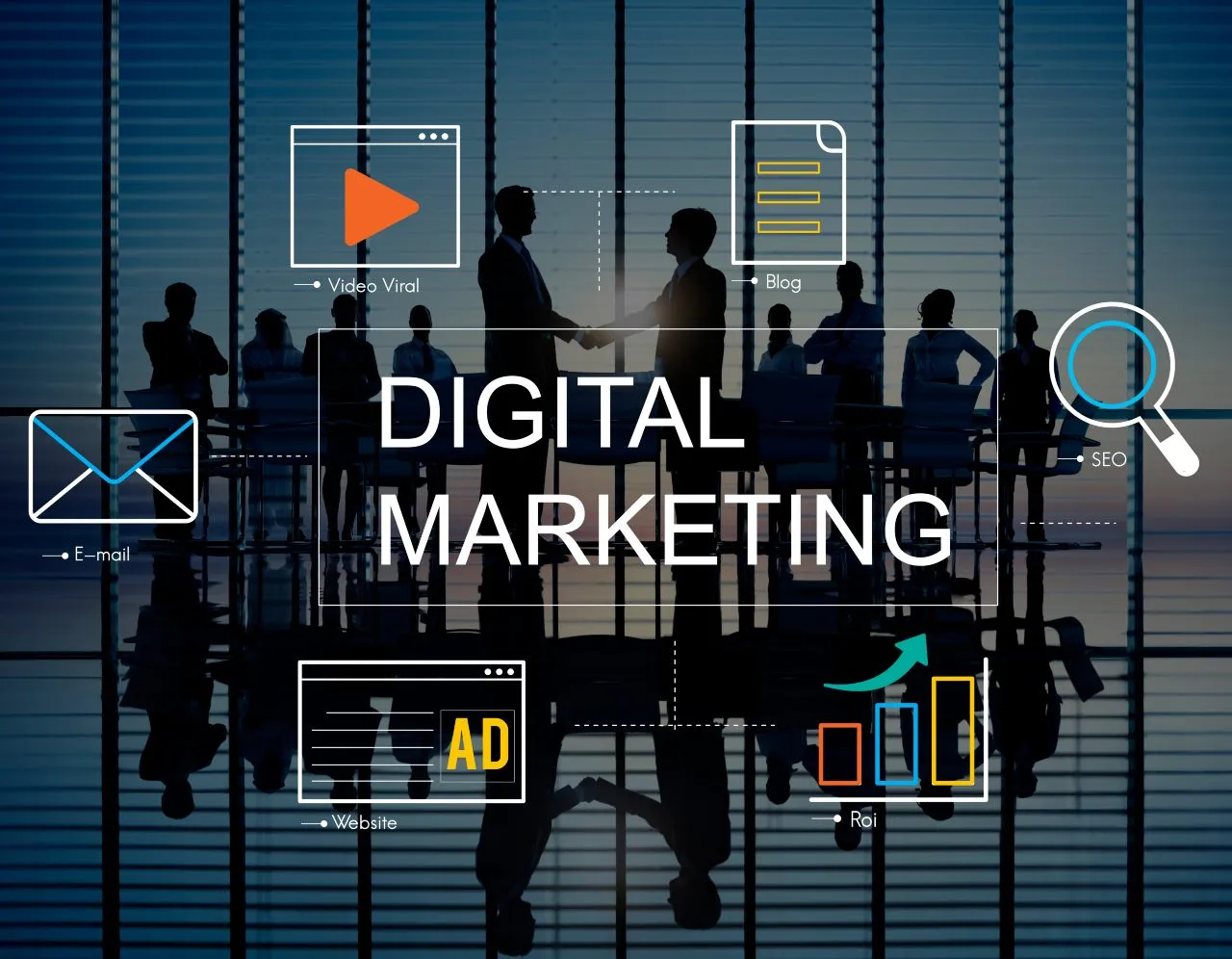Listen to article
In the fast-paced world of B2B marketing, it’s easy to get caught up in the hype around the latest shiny objects. But while new technologies and platforms emerge, some fundamental strategies continue to deliver exceptional results, often flying under the radar. Are you investing in the areas that truly drive ROI, or are you overlooking key opportunities that could set you apart from the competition?
As marketing budgets face increased scrutiny, understanding which strategies warrant more attention is crucial for maximizing impact. This article will shine a light on several overlooked marketing trends that deserve a closer look, from the enduring power of email and SEO to the underutilized potential of AI for customer insights. By understanding these key areas, B2B marketers can optimize their budget allocation and achieve better marketing outcomes.
Where B2B Marketing Budgets Are Shifting Now
Competition in B2B marketing is fierce, and the smartest teams are not just spending more—they’re spending smarter. As marketing leaders face pressure to justify ROI, they’re recalibrating their budgets to double down on channels that provide measurable value and fuel growth across the funnel. The current patterns in spend reveal a thoughtful pivot toward digital-first tactics, operational efficiency, and content-led engagement.
- B2B marketers are divvying up their budgets with 19% dedicated to advertising, 17% to content creation, 16% to tools and technology, and 12% to personnel. Source
- Over half (56%) of B2B marketers plan to boost their investment in social media platforms, indicating social is no longer just for B2C. Source
- 40% of respondents intend to dial up spending on paid search, underlining a performance-driven approach. Source
- Email marketing is still in the spotlight, with 40% of B2B marketers planning bigger budgets here—a testament to email’s enduring ability to nurture leads and accelerate deals. Source
B2B marketing budgets are painting a clear picture: the focus is on channels that not only generate leads but also nurture them through the sales cycle with data-driven precision. Allocations toward advertising and technology show a desire for greater reach and automation, while the increased investments in social and email illustrate a shift toward relationship-building and personalized engagement.
Pro Tip: As you finalize your budget, don’t be afraid to experiment—carve out a portion for testing new channels or technologies. This agility can uncover untapped opportunities while routine channel performance reviews will help you reallocate dollars to your best-performing initiatives—keeping your strategy fresh and ROI-strong.
Why Email and SEO Remain ROI Champions in the Digital Mix
Amidst the buzz of AI, influencer marketing, and social-first campaigns, the timeless effectiveness of email and SEO often gets left out of the spotlight. Yet, these mainstays continue to outperform flashier channels when it comes to return on investment—a fact that many brands overlook in their chase for the next big thing. For marketers seeking sustainable, measurable growth, these classic digital tools are far from obsolete.
- Email marketing stands out as having one of the highest returns on investment (ROI) in the digital marketing landscape. Source
- SEO follows closely behind email marketing in terms of ROI, making it a crucial component of a comprehensive marketing strategy. Source
In a landscape where advertising costs are rising and organic reach on social media continues to decline, it’s no coincidence that brands with well-optimized email and SEO strategies consistently reach their audiences more efficiently—and more profitably. By doubling down on these proven channels, marketers can avoid the volatility that comes with chasing every new trend and focus on building assets that compound value over time.
Pro Tip: Pair your SEO and email strategies: segment your email list based on search intent or top-performing SEO content, then deliver targeted campaigns that address specific audience interests. This synergy can dramatically boost both engagement and ROI.
Seizing the Mobile Advantage in Digital Marketing
As the lines between online and offline blur, consumers’ reliance on smartphones for everything from browsing to buying has fundamentally reshaped how brands must approach digital engagement. The battle for attention is now fought on smaller screens, where speed, clarity, and relevance decide who wins the click—and ultimately, the customer. Marketers who continue to treat mobile as an afterthought risk leaving massive value on the table, especially as ad budgets shift to follow where users already spend their time.
- Mobile devices account for approximately 50.5% of website traffic, surpassing desktop devices, which account for 46.5%. Source
- Mobile devices account for 70% of all search ad impressions in the United States. Source
- Over half (53%) of all pay-per-click (PPC) ad clicks originate from mobile devices. Source
- Google is the driving force behind the vast majority (95%) of paid search ad clicks on mobile devices. Source
These numbers signal more than just a shift in device preference—they demand a rethink of user experience and ad strategy from the ground up. Sites that aren’t lightning-fast on mobile, campaigns that aren’t tailored to tap-and-scroll behavior, or brands that neglect Google’s dominance in mobile paid search are likely to lose out to competitors who prioritize the mobile-first mindset.
Pro Tip: Test how your site and ads perform on a real smartphone—not just with a desktop emulator. Optimize load times, simplify navigation, and align your ad creative with mobile-specific intent. To maximize ROI, allocate search ad spend primarily to Google Ads, where mobile users are most active and conversions most likely. For businesses looking to streamline and enhance their mobile marketing efforts while managing other priorities, exploring full-service marketing solutions can provide the expertise needed to thrive in today’s competitive landscape.
Tackling Martech Overload and Unleashing True Marketing Efficiency
As marketing teams race to keep up with rapid digital innovation, many find themselves tangled in a web of overlapping tools and fragmented systems. The chase for the latest martech often comes at the expense of simplicity and true productivity. Rather than driving results, complex stacks can create barriers—slowing down campaigns, muddying insights, and frustrating teams who simply want to execute smarter, not harder.
- 43% of marketers identify optimizing productivity as the most important objective in their marketing plan. Source
- A significant 64% of marketers feel that their martech stacks have become overly complex in recent years. Source
- Only 20.65% of marketers report having a successful marketing automation strategy in place. Source
- Only a quarter of marketers report that their marketing data is fully integrated with the other tools they utilize. Source
The tension between tool overload and the promise of seamless automation is real—and it’s holding marketing teams back from realizing the full return on their investments. Forward-thinking organizations are starting to recognize that less can be more: streamlining tech stacks, aligning automation initiatives with clear business objectives, and prioritizing data integration is essential for true marketing agility.
Pro Tip: Don’t let your technology stack run on autopilot. Schedule quarterly reviews to identify which tools truly move the needle, and sunset those that add unnecessary complexity. Invest in platforms that prioritize interoperability and intuitive data sharing—these will become the backbone of streamlined, high-performing marketing operations. Want a quick win? Map the entire customer journey and spotlight stages where manual work slows your team down; these are your prime candidates for automation that delivers real impact.
AI’s Untapped Potential for Audience Insights
Despite AI’s rapid expansion in marketing tech stacks, its true power for deciphering customer behavior is far from fully realized. Many brands focus AI efforts on automation or basic analytics, overlooking its capacity to extract deep, actionable insights from ever-growing volumes of customer data. Tapping into AI’s capabilities here could be a game changer for building truly resonant campaigns and long-term loyalty.
- Only 25% of marketers are currently using AI to gain a better understanding of their customers and target audience. Source
What this means: while AI-powered targeting, segmentation, and personalization are within reach, the majority of marketers haven’t yet unlocked this level of sophistication. Those who invest early in AI-driven customer analysis will stand out—creating hyper-relevant offers, anticipating customer needs, and refining messaging with surgical precision.
For businesses looking to combine AI insights with well-rounded digital outreach, implementing tailored digital marketing strategies for small businesses can amplify their customer engagement and overall campaign effectiveness. This approach ensures that AI-driven insights are seamlessly integrated into a broader marketing plan.
Pro Tip: Start by integrating AI tools with your CRM, website analytics, or customer feedback channels. Even modest AI adoption—such as clustering customers into unique personas or identifying behavior trends—can reveal powerful new opportunities for engagement.
Marketers’ Hesitation on Cookie Alternatives: Addressing the Urgent Gap
The marketing industry stands at a critical juncture, as browsers and regulatory changes accelerate the demise of third-party cookies. Yet, many brands are treating this seismic shift with surprising complacency—jeopardizing their ability to target, personalize, and measure campaigns in the very near future. The gap between awareness and action could become a costly oversight as consumer expectations and privacy regulations evolve.
- A staggering 75% of marketers still depend on third-party cookies, even with their impending phase-out. Source
- Only a quarter of marketers (25%) are actively planning to leverage first-party data collection as a replacement for third-party cookies. Source
- A considerable 41% of marketers report having no plans to implement cookie-free targeting strategies. Source
This inertia is more than a missed opportunity—it’s a looming threat to the effectiveness of digital campaigns in a privacy-first era. Forward-thinking marketers are exploring consent-driven alternatives like first-party data, contextual advertising, and loyalty programs to ensure they’re not left scrambling as cookies vanish.
Pro Tip: Start piloting new data strategies—such as value-driven lead magnets, preference centers, or loyalty incentives—so your team can adapt without disruption as the advertising landscape continues to shift.
B2B Budgets Reveal a Shift Toward Experience-Led Growth
B2B organizations are doubling down on customer experience and content marketing as they seek new ways to stand out in a crowded marketplace. Rather than solely competing on price or product features, companies are harnessing CX and content as levers for building loyalty, trust, and long-term relationships. This signals a broader industry move toward value creation and audience engagement as central growth engines.
- 64% of B2B marketers are increasing their budget for customer experience initiatives. See the report.
- 45% of B2B companies will boost their content marketing spend in the coming year, and 42% plan to hold steady. Full stats here.
- Only 6% of B2B companies expect to cut back on content marketing spend. Read more.
It’s clear that status quo marketing won’t cut it anymore. Companies are taking a proactive approach, investing in seamless customer journeys and storytelling that delivers real business value. The data reveals that B2B buyers expect more than just information—they want experiences that educate, solve problems, and build trust.
Pro Tip: Elevate your CX and content strategy by mapping the full buyer journey and identifying content gaps at each stage. Use data to deliver timely, context-aware content that addresses specific pain points, deepening engagement and accelerating decision-making.
Why Ethical First-Party Data Strategies Are Winning Customer Trust
With third-party cookies nearing extinction, brands are facing a pivotal moment: those who rely on data collected directly from customers—and do so transparently—are better positioned to thrive. As consumers become more privacy-aware, ethical handling of first-party data is not just a compliance checkbox, but a core differentiator that shapes brand loyalty and reputation in a crowded marketplace.
- The disappearance of third-party cookies is intensifying the value of first-party data, content-driven approaches, and direct channels like email marketing. Source
- Upholding responsible data use and publicly committing to social responsibility have become crucial for sustaining brand trust and deepening customer relationships. Source
Modern marketing hinges on cultivating genuine relationships—and that starts with respecting customers’ data. Those who invest in transparency and empower consumers with clear privacy choices will set themselves apart from competitors still clinging to outdated practices.
Pro Tip: Enhance your data strategy by clearly communicating your data practices and providing easy-to-use privacy settings. Not only does this build trust, but it turns transparency into a competitive advantage.
The Reality Gap in Omnichannel Execution
While the ambition to deliver a cohesive, omnichannel experience is at the forefront of marketing strategy discussions, the practical execution often falls short. As brands invest in new platforms and customer touchpoints, unifying these interactions into a truly seamless journey remains elusive for most organizations.
- Only 27% of senior marketers believe their omnichannel journeys are truly aligned. Source
This striking figure highlights how the vast majority of companies still struggle to connect the dots between channels, leading to inconsistent brand interactions and missed opportunities for engagement. As consumers effortlessly switch between devices and platforms, disjointed experiences can quickly erode trust and loyalty. To bridge this gap, organizations need more than just the right tools—they require cross-functional collaboration and a holistic approach to customer data.
Pro Tip: Regularly audit your customer interactions from end to end. Involve stakeholders from marketing, sales, and support to pinpoint where customers face friction or drop off. Addressing these pain points collaboratively will help bring your omnichannel vision to life.
Rethinking Digital Reach in an Era of Ad Blockers
Consumer resistance to intrusive ads is reshaping the digital marketing landscape. With audiences wielding more control over what they see online, relying solely on traditional display ads is becoming a losing game. Instead, marketers are finding success by prioritizing relevance, authenticity, and seamless integration within the user experience.
- Ad blockers are currently active on more than 615 million devices worldwide. Source
This widespread adoption of ad-blocking technology is a wake-up call for brands to move beyond disruptive ad formats. Winning strategies now center on value-driven, non-intrusive experiences—whether through well-crafted native ads, trust-building partnerships with influencers, or standout branded content that audiences genuinely want to engage with.
Pro Tip: Experiment with platforms and formats less susceptible to ad blockers. Native advertising, sponsored newsletters, and creative influencer collaborations can deliver your message organically, sidestepping the barriers of traditional display while resonating with consumers on their terms.
Why Content Strategy and Audience-Centricity Are Non-Negotiable
With every marketing dollar under the microscope, the days of “spray and pray” content are long gone. As marketing leaders face mounting demands for transparency and tangible results, integrating strategy and user empathy is no longer a competitive edge—it’s a necessity. A cohesive content approach, rooted in real audience needs, ensures that every asset you produce pulls its weight in both engagement and ROI.
- 60% of marketers say their budgets and ROI face increased scrutiny compared to previous years, reflecting a heightened focus on performance and accountability according to HubSpot.
- 70% of organizations have successfully woven content strategy into their broader marketing, sales, and communications plans, fostering greater consistency and impact across all channels. Source.
- Only about 17% use a dedicated, stand-alone strategy specifically for content marketing—suggesting most see greater benefits in integration. Source
- 9% acknowledge having no content strategy at all, highlighting a critical gap that could hinder growth. Source
- Among top performers, 87% put user needs and pain points ahead of pushing company-centric messages—making empathy the bedrock of high-conversion strategies. source, source.
Key Takeaway:
As scrutiny around marketing performance intensifies, organizations that treat content strategy as a living, integrated process—and that place the customer journey front and center—are far more likely to win trust and drive growth. The numbers speak for themselves: pure sales pitches are losing ground to content that solves real challenges for real people. Instead of viewing content as a box-ticking exercise, make it the heartbeat of your brand’s communication.
Pro Tip:
Use audience insights to fuel every stage of your content planning. Go beyond surface-level personas—interview customers, analyze support tickets, and watch how users interact with your site. Then, develop content clusters around their most urgent pain points and track which topics drive results. When content is both strategic and empathetic, you’ll have the data—and the loyalty—to justify every marketing investment.
Why Privacy-First Approaches Are Redefining Marketing Success
As data breaches and unwanted data sharing stories continue to dominate headlines, today’s consumers are more vigilant—and skeptical—than ever about how brands handle their information. Marketers face a new reality: transparency and responsible data management aren’t simply compliance checkboxes, they’re critical drivers of brand reputation and customer loyalty.
- Data privacy is now a leading concern for customers worldwide, with landmark regulations like GDPR and CCPA actively reshaping how marketers gather, store, and leverage personal information. Learn more.
- By 2025, brands without a strong privacy-first framework will be at a clear disadvantage, as prioritizing consumer data protection is key to earning—and retaining—trust. See the data.
A privacy-first marketing mindset isn’t just about avoiding fines or ticking off legal requirements—it’s about future-proofing your brand. Companies who proactively communicate their data policies, empower users with control, and adapt to evolving privacy standards stand to differentiate themselves in an era of heightened scrutiny.
Pro Tip: Go beyond legal minimums. Regularly audit your data practices, publish accessible privacy notices, and make it easy for users to manage their preferences. Honesty and openness about data usage will not only help you stay compliant but also foster deeper trust that translates to long-term customer loyalty.
Conclusion
As the marketing landscape evolves at breakneck speed, these overlooked trends emphasize the need for businesses to remain agile and forward-thinking. From reallocating budgets to capitalize on high-ROI channels like email marketing and SEO, to addressing the complexities of martech stacks and the pivotal shift toward first-party data, the opportunities to refine and optimize are endless. Yet, the data also reveals critical gaps—whether it’s the underutilization of AI for customer insights, the sluggish transition from third-party cookies, or the fragmented omnichannel experiences many organizations struggle to mend.
What’s clear is that the most successful marketers aren’t just reacting to trends—they’re proactively identifying and prioritizing strategies that align with long-term goals. This includes embracing privacy-first practices, optimizing for mobile, and creating content that speaks to customer needs rather than sales pitches. By addressing these often-overlooked areas, businesses can future-proof their strategies, build stronger relationships, and drive meaningful results.
Ready to boost your traffic and grow your website? Your customers are looking for you, and our SEO services can help you be found across search engines. Let’s ensure your marketing efforts leave no opportunity untapped!
About Marketing Data Trends That Deserve More Attention
This guide was written by the Scopic Studios team and reviewed by Araksya Hakobjanyan, SEO Lead at Scopic Studios.
Scopic Studios delivers exceptional and engaging content rooted in our expertise across marketing and creative services. Our team of talented writers and digital experts excel in transforming intricate concepts into captivating narratives tailored for diverse industries. We’re passionate about crafting content that not only resonates but also drives value across all digital platforms.
Note: This blog’s feature image is sourced from Freepik.






































































































































































































































